Through a Hunter’s Lens
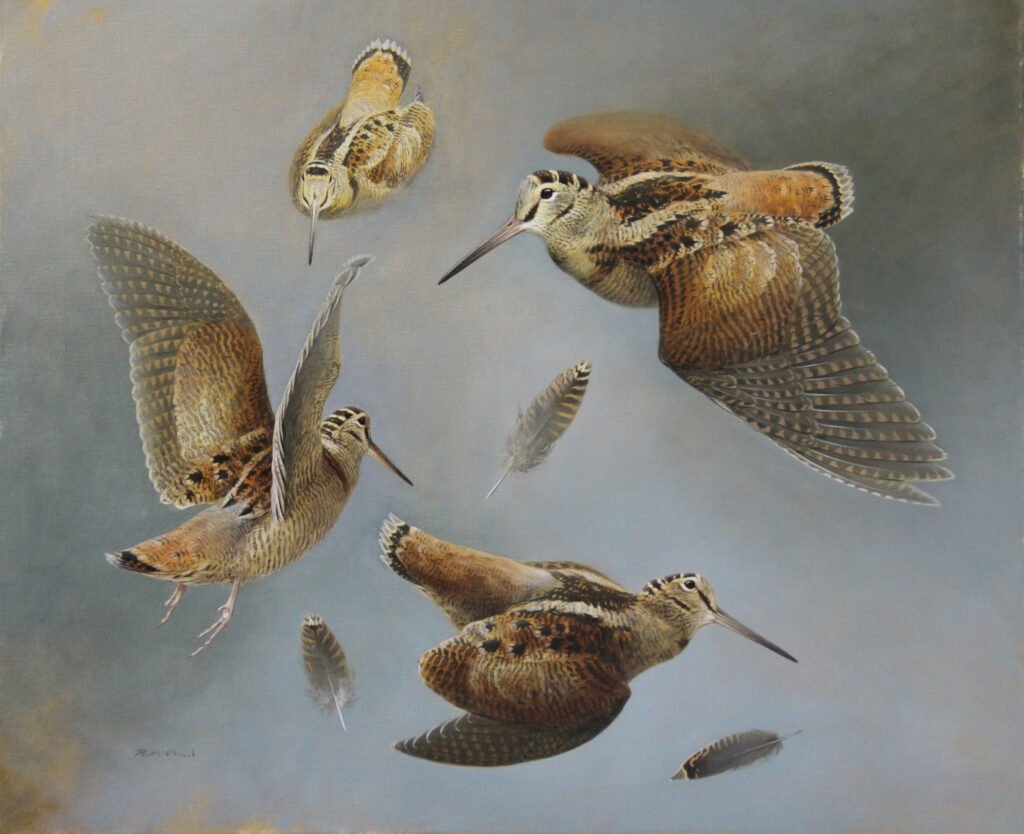
Rodger McPhail is arguably Britain’s best-known and most respected sporting artist. But it is his pragmatic view of wildlife and animal behavior that sets him apart. There are a handful of chefs who are so revered by their contemporaries, they are addressed simply as “chef,” the culinary equivalent, I guess, of “your highness.” Men like Alain Ducasse, Joël Robuchon, Thomas Keller, Pierre Gagnaire, and the late Michel Roux, Sr., come to mind. In the British sporting and wildlife-art worlds, there is the equivalent. His name is Rodger McPhail, and he is the Don Corleone of the British sporting-art world.
It is the reverence with which many of Rodger’s talented contemporaries speak of him that makes one realize just how good he must be. “He is the artist we all look at and think, If only I had his talent,” says leading British sporting-and-wildlife artist Owen Williams.
Some have gone even further and declared him a once-in-a-generation talent, like the late David Shepherd was to African wildlife, or like John Constable and Edwin Landseer were to English landscapes and British animals. And when you gaze upon any one of his paintings, such sentiment is hard to dispute. From adders, red grouse, roe deer, red squirrels, and rising trout, to landscapes and bucolic sporting scenes, each one seems to be imbued with the essence of what it is that we, as hunters, love about the countryside and its array of inhabitants—which may be part of the reason why his art is so sought after by those with a passion for country sports.
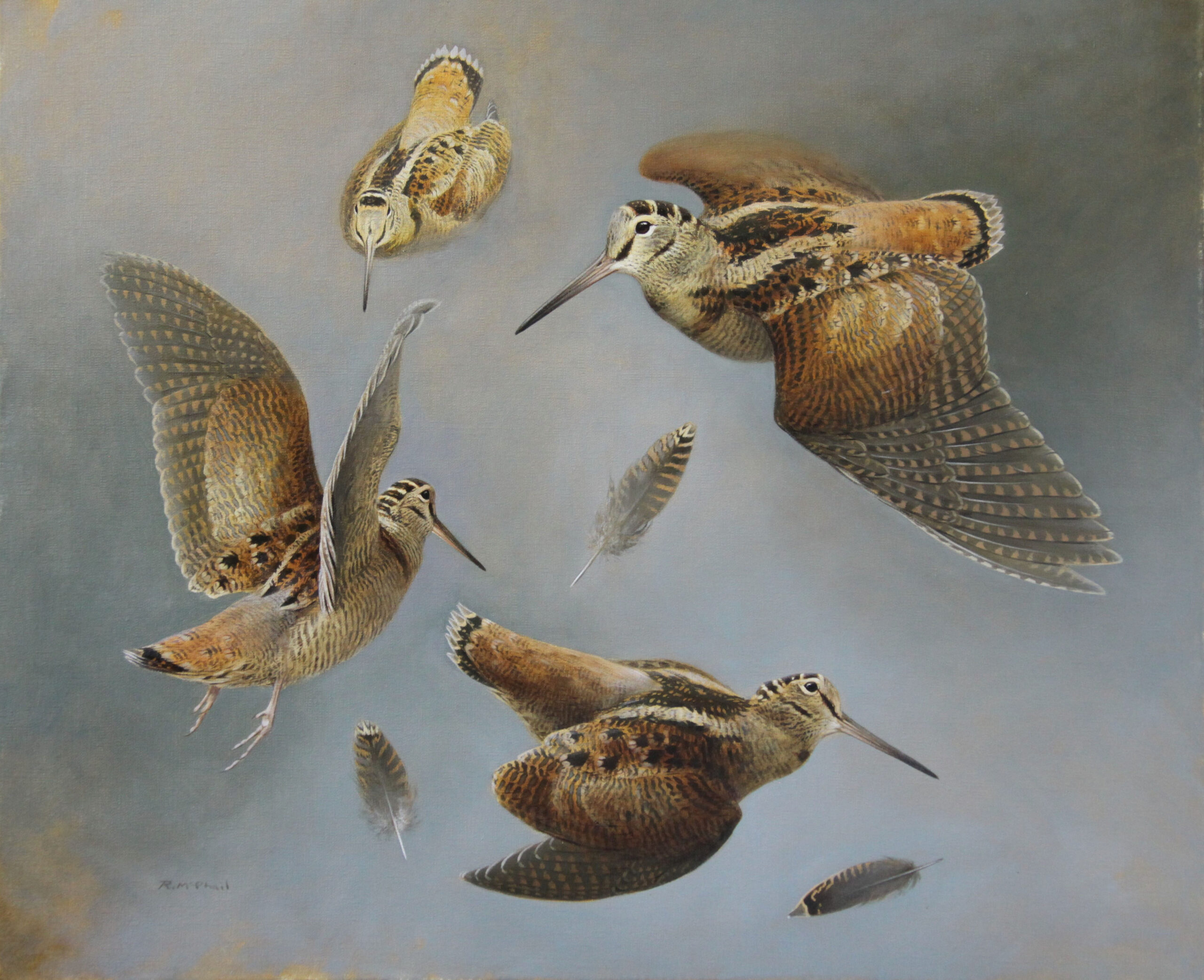
I will certainly never forget the first time I saw one of Rodger’s paintings in the flesh, because never before had a piece of art affected me in such a way. It literally stopped me in my tracks—despite the large duffel bag and several fly-rod tubes I was carrying at the time—and transported me back to a moment in time that I hadn’t realized was so deeply etched in my mind.
I was staying as a guest in a house that overlooks the River Tay in Perthshire, Scotland, where the owner’s substantial collection of sporting art is displayed, including an oil-on-canvas underwater scene by Rodger that is so exquisitely realistic and beautiful that at first my mind couldn’t quite comprehend what I was looking at.
As an avid fly fisherman, I have swum in a number of Scottish rivers over the years in my quest to learn more about my quarry, and I have had some memorable experiences of swimming with Atlantic salmon and sea-run brown trout in particular. And as soon as I cast my eyes upon this painting, I was immediately transported back to an afternoon in the Scottish Highlands in 2003, when I spent an hour or so in a pool on the River Avon with three large salmon, several brown trout, and a number of salmon parr, or juveniles.
This painting somehow captured the way that light behaves beneath the watery surface, constantly changing, diffracting, sparkling, dappling, reflecting off the streambed, and the effect of millions of suspended particles of mineral and debris. An admirer can’t help but notice the colors and the way that the water filters the light and casts a blue-green hue across the boulders, pebbles, and upon the backs and flanks of the fish themselves—or the movement, too, and the way that the fish effortlessly harness the currents to keep themselves poised in suspended animation with the subtlest adjustments of their fins.

How someone could capture all of this with a brush and paint was, to me, mind-blowing. And now, some 15 years later, having gotten to know Rodger a little bit over the years and having studied dozens of his paintings, I am still every bit in awe of him as I was that afternoon on Tayside. Somehow, he sees these incredible moments through the same lens that I do, and he has the extraordinary talent to be able to transform them into achingly beautiful works of art that exude the character and nuance of his subject that we as hunters fall in love with.
Of course, his knack for producing such exquisite works of art is a mixture of God-given talent and countless hours spent behind his easel. After all, painting has now been his full-time, sole profession for more than 50 years, so he has had a lot of time to perfect his craft—although he would no doubt assert that there is no such thing as perfection in art.
But anyone who has seen Rodger with a paintbrush in hand could not fail to be struck by how effortless he makes it look and, indeed, the speed and confidence with which he paints. I have heard other artists comment on how quickly he can churn out a seemingly flawless painting. When I ask him about this, his response is typically wry. “The more paintings I produce, the richer I will be!” he says, mischievously. In truth, the confidence with which Rodger paints is a byproduct of his unrivaled experience.
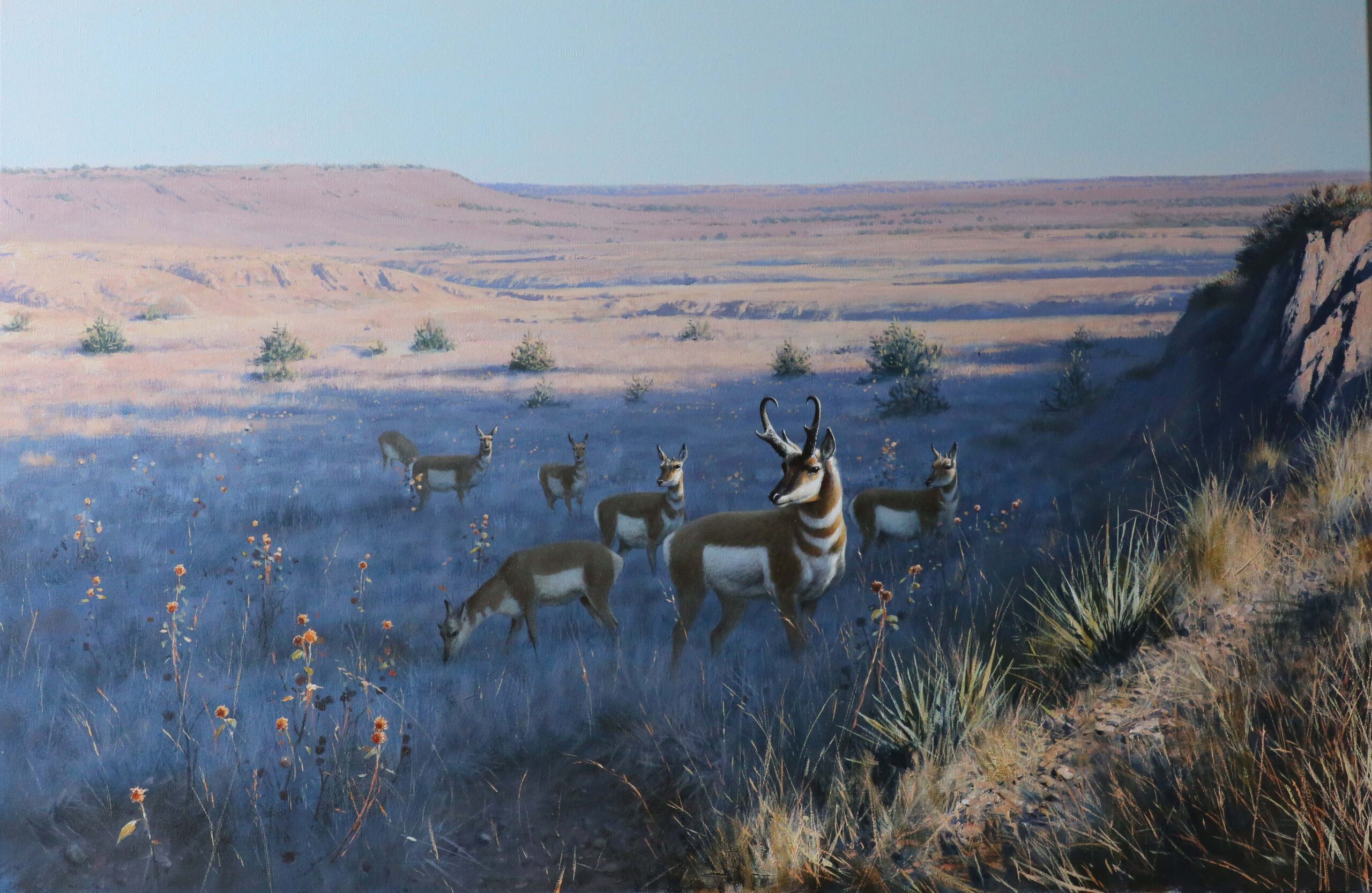
Rodger grew up in rural Lancashire in the north of England, and although his parents weren’t into art or indeed wildlife, his interest in the natural world developed from a young age. “I had great freedom as a child to explore the fields, hedgerows, woods, ponds, and streams surrounding our home,” he explains. “And I guess I am naturally curious about the world, so I did develop a fascination with flora and fauna from a pretty young age. And I was equally interested in drawing. So, I guess it was a natural coming together of two interests.”
It didn’t take long for Rodger to realize that he had a talent for depicting the wildlife he came across with pencils and paints. Indeed, he sold his first painting—an acrylic of a pond—when he was still at school, which planted a seed in his mind about turning his hobby into a career. “I guess I realized quite early on that I was quite good at it,” he adds with typical British understatement.
“By the time I was 15 or 16, I decided to see if I could get good enough to do it professionally,” he says. Having sold a few paintings, he then started selling black-and-white drawings to the then editor of The Shooting Times, Tony Jackson, who in turn introduced him to Alymer Tryon, the founder and owner of Tryon Gallery (a prestigious art gallery in London now known as Rountree Tryon Galleries), a meeting that Rodger recognizes as a seminal moment in his career as an artist. “And the rest, as they say, is history—I have never had a proper job,” he adds, the characteristic twinkle in his eye belying the dry wit he is renowned for.
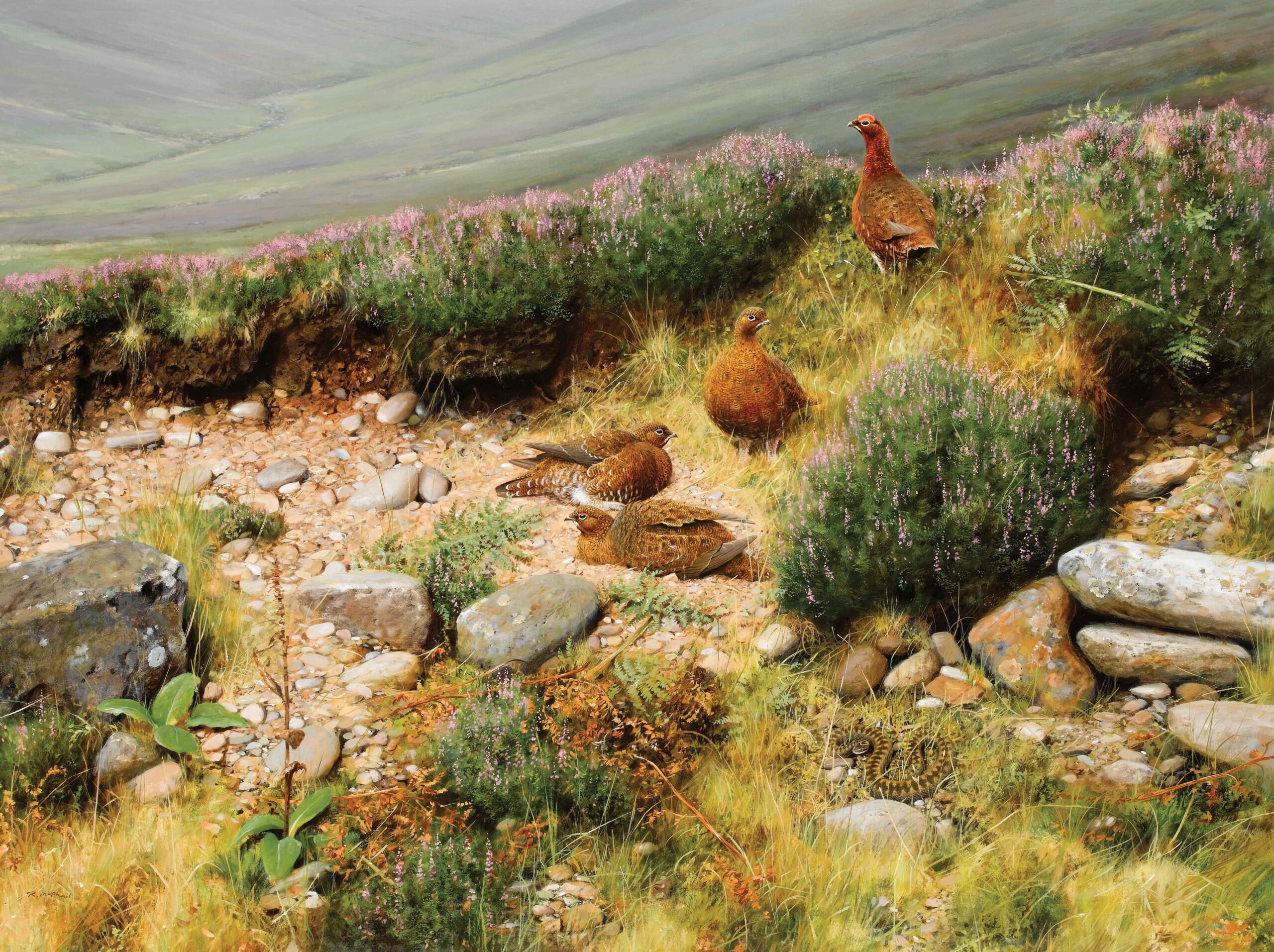
The other thing that sets Rodger apart from many other wildlife artists is the perspective that his love and experience of country pursuits give to his paintings. Long before I met him, or really knew much about him, I had a hunch that he was more than just a lover of wildlife. I had a feeling that, like me, he was sportsman, a hunter, and a fisher. Several years later, I was introduced to him for the first time by fellow artist and friend Jason Sweeney at The CLA Game Fair, and we were soon deep in conversation about woodcock shooting, salmon fishing, and wine drinking. And since then, one of the things I have come to really respect and admire about Rodger is his willingness to vocalize his own views on hunting.
In his recently published semi-autobiographical book, Rodger McPhail—An Artist by Nature, for instance, he sums up his relationship with the natural world with refreshing candor: To my mind, it is enjoyment that is the crux of the whole controversy. We have been hunter-gatherers since we began to walk upright on this earth. The hunting gene is with us whether we like it or not. The thrill of the chase is one of our basic instincts, triggering the release of endorphins. The built-in pleasure of hunting is there to make us do it, and do it again, like the pleasure of sex or food. Our early survival as a species was ensured by this. The thrill of the hunt was the carrot; hunger was the stick. If you think we are no longer hunter-gatherers, look at a bunch of children around a rock pool. That scene has not changed since the Stone Age.
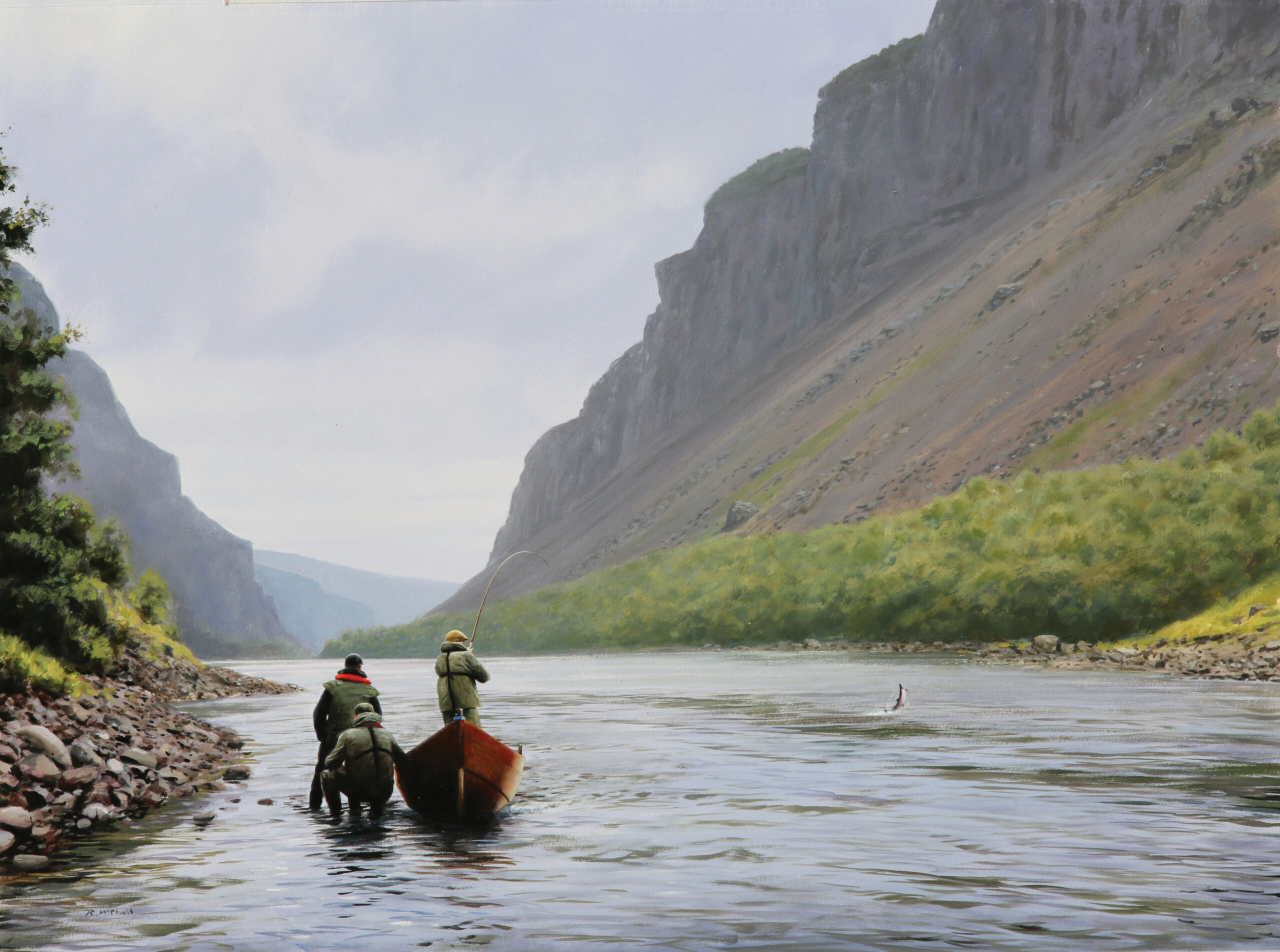
Rodger has invariably spent as many hours observing his subjects as he has depicting them on canvas, which has allowed him to develop a deeply informed understanding or interpretation of wildlife and animal behavior, so his views on the subject are inevitably extremely well considered and, in my opinion, insightful and refreshingly pragmatic. “Studying wildlife has convinced me that they are motivated almost entirely by built-in instinct,” he says. “They are blissfully free from the complex intellect, rational thought, and deep emotions that are the sole prerogative and also the curse of being human. Animals suffer, of course. They suffer pain, hunger, and fear, but they do not have our capacity for mental anguish. The price we pay for rational thought is a huge one. Anxiety, doubt, depression, remorse, and jealousy can plague us even when we are well-fed and healthy. We fear the future, regret the past. We agonize over our relationships, our achievements, and our image. Animals are, mercifully, free from all that, and it is wrong of us to imagine that they feel the same emotions as us and suffer the same mental torment.” I think that to most of us, as hunters, this is fairly obvious, but we do have a tendency to anthropomorphize and turn animals, our pets in particular, into little, furry people who share our views and interpretation of life and death.
“I find anthropomorphism rather insulting to animals,” adds Rodger. “It implies that they are not quite good enough as they are, and to make them more interesting we must dress them up with human characteristics. This, I think, is a mistake, and we should not saddle animals with our own traumas and neuroses. It also adds to our own unhappiness when we suffer mental agonies on their behalf.”
I guess it is partly this pragmatism, this raw honesty, that draws me to Rodger and gives his work greater poignancy in my eyes. He seems to see the natural world as I do, through the eyes of a hunter, and he is comfortable with that—which is just so refreshing in today’s day and age.
Originally published in Volume 10, Number 4 (June-July 2022) of Covey Rise.
























